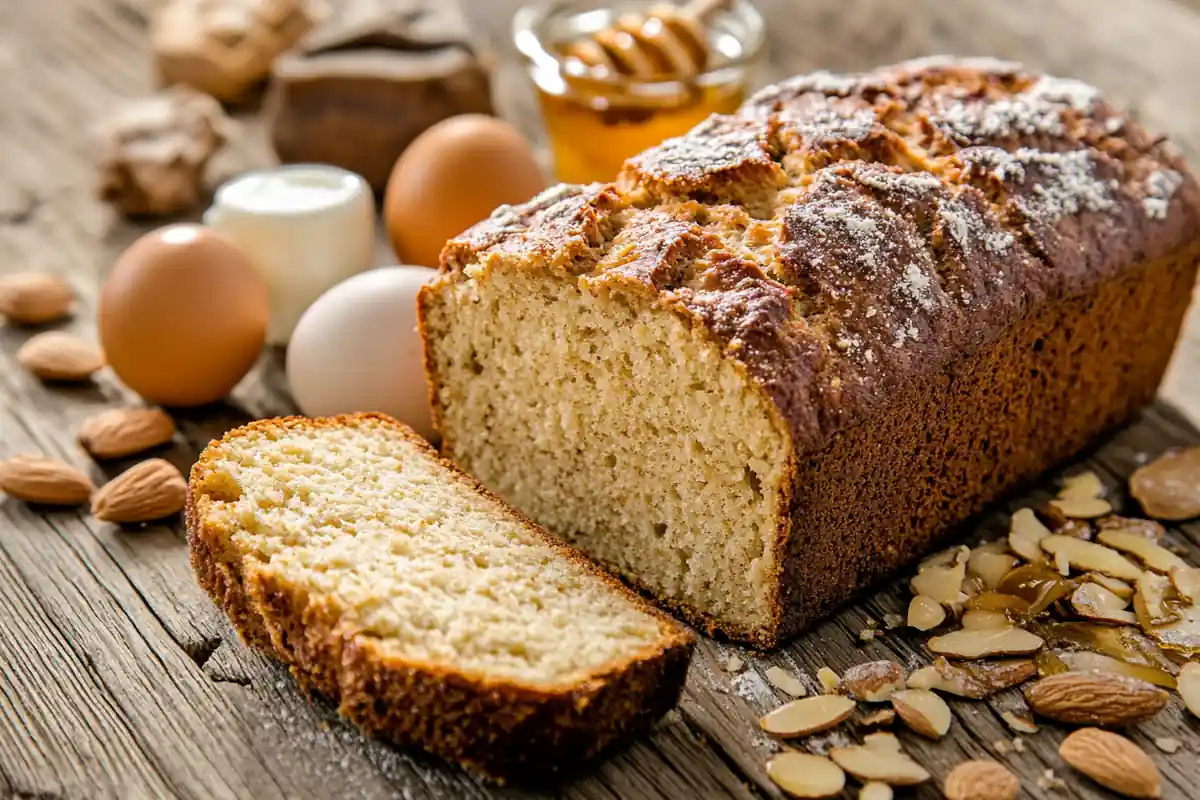Who doesn’t love waking up to the warm, cozy aroma of freshly baked bread? But if you’re avoiding gluten, breakfast options can feel limiting. The good news? Gluten free breakfast bread is not only real it’s absolutely delicious. Whether you’re managing celiac disease, dealing with gluten sensitivity, or simply looking for healthier morning choices, this guide has got your back.
We’re diving into everything from what gluten actually is, to the tastiest gluten-free bread recipes you can whip up for breakfast. You’ll also learn how to bake like a pro without traditional flour, which ingredients truly make a difference, and how to avoid those common baking mishaps. And yep we’ve included expert storage tips and answers to the most frequently asked questions, too.
Table of Contents
Understanding Gluten and the Rise of Gluten Free Breakfast Bread
What Is Gluten and Why Do Some People Avoid It?
Gluten is a natural protein found in grains like wheat, barley, and rye. It gives bread that soft, chewy texture we all know and love. But for some people, it can wreak havoc on their digestive systems.
There are three main reasons people go gluten-free:
- Celiac disease: An autoimmune disorder where gluten triggers damage in the small intestine.
- Gluten sensitivity: Not celiac, but symptoms like bloating, fatigue, or brain fog may occur after eating gluten.
- Lifestyle preference: Many folks just feel better or less bloated when they skip gluten-heavy foods.
Whether it’s medical or personal, avoiding gluten doesn’t mean you have to say goodbye to comforting breakfasts. With a little know-how, you can still enjoy gluten free breakfast bread without sacrificing flavor or texture.
Why Gluten Free Breakfast Bread Is Worth a Spot on Your Table
Bread is a breakfast classic. Toast it. Slather it with nut butter. Pair it with your favorite smoothie. But if you’re cutting out gluten, many store-bought loaves just won’t cut it they’re either too dry, too crumbly, or just taste… off.
Here’s why making or buying gluten-free breakfast bread is totally worth it:
- Healthier grains: Many recipes use nutrient-dense flours like almond or oat.
- Better digestion: No more bloating or discomfort for gluten-sensitive folks.
- More creativity: Think beyond plain toast fruity, nutty, or spicy loaves await.
Plus, gluten-free doesn’t mean flavor-free. In fact, with the right ingredients, these loaves can be more satisfying than their wheat-based cousins.
Building Blocks of Gluten Free Breakfast Bread
Top Gluten Free Flours for Baking Breakfast Bread
When you’re baking gluten free breakfast bread, the type of flour you use makes a world of difference. Not all gluten-free flours are created equal, and blending the right ones is often the secret to success.
Here are the most popular and effective flours used in gluten-free bread recipes:
- Almond Flour: High in protein and healthy fats, it adds a slightly sweet, nutty flavor. Perfect for banana or blueberry loaves.
- Brown Rice Flour: Mild in flavor and light in texture. Great as a base for mixing with heavier flours.
- Coconut Flour: Absorbs a lot of moisture, so you’ll need extra eggs or liquid. Best used in small amounts.
- Sorghum Flour: Rich in antioxidants and has a texture similar to wheat. A great flour for structure.
- Buckwheat Flour: Despite the name, it’s gluten-free. Earthy and dense, it’s great for hearty breakfast bread.
- Oat Flour (certified gluten-free): Adds moisture and a mild, sweet flavor. It’s a fantastic choice for honey oat bread or muffins.
Each of these flours has its own unique texture, flavor, and absorbency. Blending a few of them together usually results in the best texture for breakfast loaves.
You’ll often see combinations like almond + rice + tapioca flour or oat + sorghum + coconut flour to mimic the elasticity and softness of traditional bread.
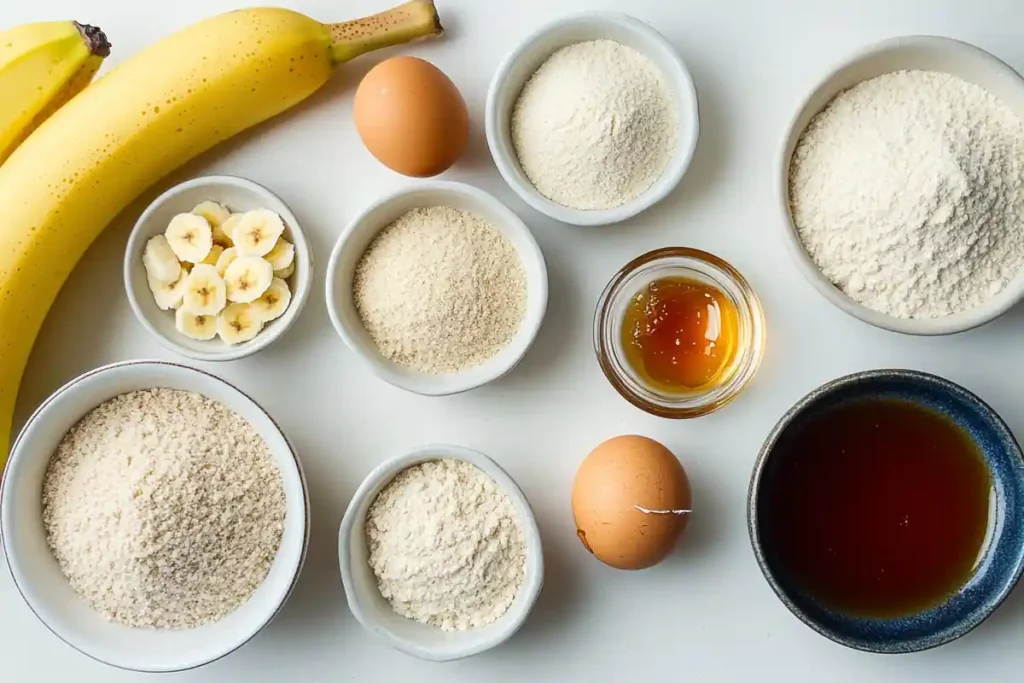
Binders & Leavening Agents: The Backbone of Gluten Free Bread
Since gluten helps bind dough and trap air, you’ll need reliable substitutes to keep your gluten-free bread from turning into a brick.
Here’s what gluten-free bakers use:
Binders (Hold Everything Together)
- Xanthan Gum: A tiny amount adds elasticity and helps hold moisture. It’s the most common binder.
- Guar Gum: An alternative to xanthan, often used in a 1:1 ratio.
- Psyllium Husk Powder: Excellent for structure and softness. Also helps with rise.
Leavening Agents (Make It Fluffy)
- Baking Powder: Adds lift. Make sure it’s gluten-free (some contain starches).
- Baking Soda + Acid (like lemon juice or yogurt): A classic combo for moisture and height.
- Eggs: Provide lift, bind ingredients, and enhance texture.
Mixing the right binder with your gluten-free flour blend can seriously transform your breakfast bread from dense to dreamy.
Must-Try Gluten Free Breakfast Bread Recipes
Gluten-free doesn’t have to mean boring or bland. With the right combos of gluten-free flours, natural sweeteners, and a dash of creativity, you can whip up irresistible breakfast breads that’ll make you forget all about wheat.
Here are four delicious gluten free breakfast bread recipes to add to your rotation whether you’re into cozy spices or juicy berries.
1. Gluten Free Cinnamon Swirl Bread
If you’re craving something warm, spiced, and comforting, this one’s a winner. This gluten-free cinnamon bread smells like a hug from the oven.
Key Ingredients:
- Almond flour + oat flour combo
- Coconut sugar or maple syrup
- Eggs
- Cinnamon (a whole lot of it)
- A touch of vanilla extract
Pro Tips:
- Use a layer of cinnamon and sugar in the middle for a true swirl effect.
- Let it rest for 10 minutes after baking to firm up before slicing.
This loaf pairs beautifully with coffee or herbal tea. It’s also freezer-friendly just slice and store for a quick weekday breakfast.
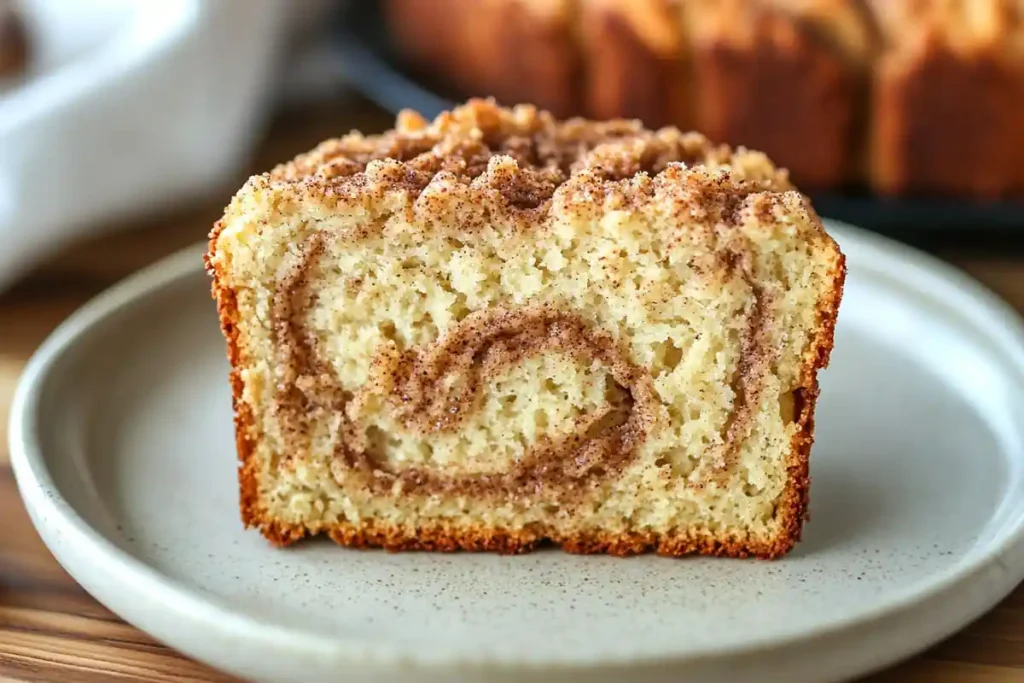
2. Gluten Free Lemon Blueberry Bread
Tangy lemon and juicy blueberries? Yes, please! This gluten-free fruit bread is bright, zesty, and perfect for spring or summer mornings.
What You’ll Need:
- Gluten-free all-purpose flour or a mix of sorghum and almond flour
- Fresh or frozen blueberries
- Lemon zest + lemon juice
- Baking powder and eggs
- Honey or maple syrup for sweetness
Why You’ll Love It:
- The lemon adds a light, refreshing twist.
- Blueberries bring moisture and natural sweetness.
- Add a light lemon glaze if you want to take it over the top.
This one’s great warm or chilled and even better with a dollop of dairy-free yogurt.
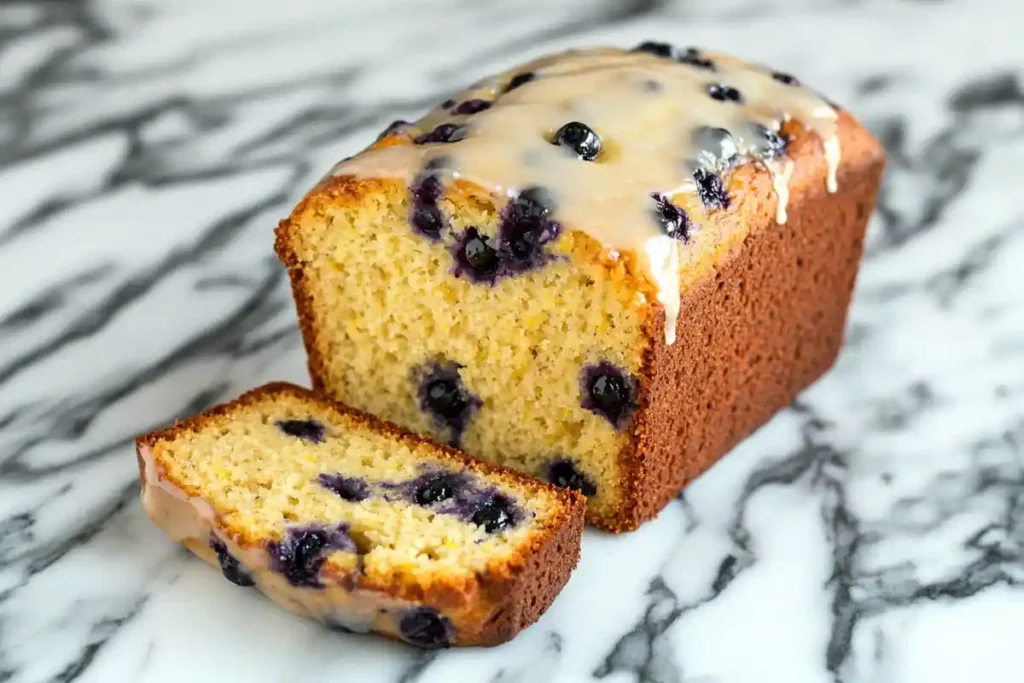
3. Classic Gluten Free Banana Bread
You can’t go wrong with banana bread and the gluten-free version is just as moist, flavorful, and comforting.
Must-Have Ingredients:
- Overripe bananas (the more spots, the better)
- Oat flour + almond flour
- Eggs or flax eggs (for a vegan version)
- Coconut sugar or maple syrup
- Cinnamon and vanilla
Quick Tips:
- Don’t overmix that’s the key to a tender crumb.
- Add chopped walnuts or chocolate chips for extra flair.
This one’s a staple and a great way to use up leftover bananas without tossing them.
4. Gluten Free Honey Oat Breakfast Bread
Looking for something a little heartier but still slightly sweet? This loaf has that rustic, homemade feel and it’s full of fiber, too.
Ingredient Highlights:
- Certified gluten-free oat flour + a little brown rice flour
- Honey for natural sweetness
- Eggs and applesauce for moisture
- A pinch of sea salt and cinnamon
Best Features:
- Slightly sweet with a subtle crunch from whole oats.
- Pairs well with almond butter or fresh fruit.
- Keeps well in the fridge for up to 5 days.
It’s a solid choice if you want something that feels like a treat but fuels your morning like a champ.
Pro Tips for Baking the Best Gluten Free Breakfast Bread
You’ve got the flour. You’ve got the recipes. Now let’s make sure your gluten free breakfast bread doesn’t fall flat literally. Baking without gluten has its challenges, but a few key techniques can take your loaves from “meh” to “OMG, this is gluten-free?!”
Mastering Measurements: Accuracy Is Everything
In gluten-free baking, winging it just doesn’t work. Measuring by volume can lead to inconsistent results especially with light, absorbent flours like coconut or oat.
Here’s how to nail it every time:
- Use a digital kitchen scale to weigh your flours and ingredients.
- Spoon and level if you’re using measuring cups (don’t scoop directly from the bag).
- Follow recipes to the gram especially when it comes to flour-to-liquid ratios.
Even a tablespoon too much can throw off texture, leading to dry or gummy bread. If you’ve struggled with dense loaves in the past, inaccurate measurements could be the culprit.
Avoid These Common Gluten Free Baking Mistakes
Let’s be real: baking without gluten is an art. But most flops can be avoided with a little know-how.
Watch out for these pitfalls:
- Overmixing the batter: Gluten-free flours can get tough if overworked.
- Skipping the binder: Xanthan gum or psyllium husk is not optional.
- Using only one flour: Blend at least two types for better flavor and texture.
- Underbaking: Gluten-free loaves often need more time in the oven. Use a toothpick test and give it a few extra minutes if needed.
- Not letting it rest: Let your bread cool before slicing this helps it firm up and prevents crumbling.
Small mistakes = big results in gluten-free baking. Stay sharp and you’ll get bakery-worthy loaves every time.
Boosting Flavor & Texture Like a Pro
Because gluten free breakfast bread lacks the flavor of wheat, you’ll need to amp things up. But that’s also the fun part you get to be creative.
Here’s how to add personality to your loaves:
- Spices: Cinnamon, nutmeg, cardamom, or even pumpkin spice.
- Fruit and Veg: Bananas, apples, carrots, or zucchini for natural sweetness and moisture.
- Nuts and Seeds: Walnuts, sunflower seeds, or chia for crunch and healthy fats.
- Sweeteners: Honey, maple syrup, or mashed dates to keep it refined sugar-free.
You can also swirl in dairy-free cream cheese, jam, or nut butter before baking to turn simple bread into something magical.
FAQs About Gluten Free Breakfast Bread
We get it gluten free breakfast bread isn’t exactly the same as the stuff you grew up with. It’s lighter, different, sometimes trickier to perfect. But with the right info, it doesn’t have to be frustrating. Here are the answers to the most asked questions straight from the “People Also Ask” section on Google and yes, they’re short, sweet, and super helpful.
Can I Use Gluten Free Flour in Any Bread Recipe?
Technically? Yes. But should you? Not without some tweaks.
Traditional wheat-based recipes rely on gluten for structure, elasticity, and rise. Just swapping in gluten-free flour without adjusting for liquid, binders, and bake time often leads to a dense, dry loaf.
Here’s what you should do:
- Choose gluten-free flour blends that already include binders like xanthan gum.
- Follow a recipe designed specifically for gluten-free baking for the best results.
- If you must substitute, go with a 1:1 gluten-free baking flour and even then, expect to tweak.
How Should I Store Gluten Free Breakfast Bread?
Since there are no preservatives, gluten-free bread can dry out faster. But storing it right keeps it fresh and tasty longer.
Best Storage Tips:
- Cool completely before storing.
- Wrap tightly in plastic wrap or beeswax paper.
- Place in a sealed container or freezer-safe bag.
- Store at room temperature for 2 days, or refrigerate up to 5 days.
- For longer shelf life? Freeze slices and toast as needed.
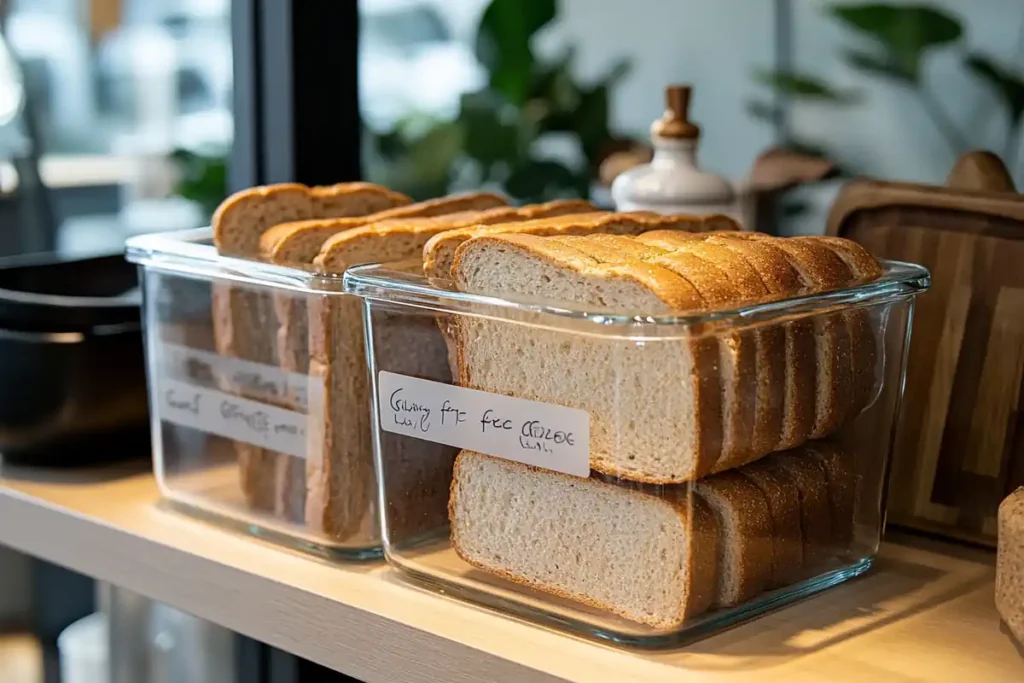
Is Gluten Free Breakfast Bread Healthier Than Regular Bread?
It depends on what goes in it.
Gluten free breakfast bread can be healthier if made with:
- Whole food flours like oat, almond, or buckwheat
- Natural sweeteners like honey or maple syrup
- Added fiber from chia seeds or flax
However, store-bought gluten-free bread often contains extra starches and sugars to mimic wheat texture.
If health is your goal, homemade wins every time. For deeper nutritional comparisons, Harvard’s Nutrition Source breaks it down beautifully.
Can I Make Gluten Free Bread Without Eggs?
Absolutely. Eggs provide lift, moisture, and structure but you’ve got solid options if you’re egg-free or vegan.
Best Egg Substitutes:
- Flax eggs (1 tbsp ground flax + 2.5 tbsp water = 1 egg)
- Chia eggs (same ratio as flax)
- Mashed banana or applesauce (best for sweeter loaves)
Pro tip: Use flax or chia in denser loaves like banana or oat bread. For fluffier bread, you may need baking soda + lemon juice to help it rise.
Why Is My Gluten Free Bread So Dense?
Ah, the classic problem.
Here’s what might be going wrong:
- Not enough leavening agent (baking powder/soda)
- No binder like xanthan gum or psyllium
- Using just one flour type (blending flours improves lift)
- Overmixing (toughens the texture)
- Undercooked center (check doneness with a toothpick)
Gluten-free bread needs a little more love and patience. But once you find your groove, it’s so worth it.
Embrace the Joy of Gluten Free Breakfast Bread
Whether you’re going gluten-free out of necessity or by choice, one thing’s for sure you don’t have to give up your favorite morning ritual. From cozy cinnamon swirl loaves to fruity lemon blueberry slices, gluten free breakfast bread can be every bit as satisfying as traditional wheat bread sometimes even more.
The best part? You’re in control of what goes into your bread. No mystery ingredients. No preservatives. Just wholesome flours, real fruits, natural sweeteners, and flavors you actually love.
And hey mistakes happen. You might burn a loaf or end up with something a little too crumbly. But keep at it. Because the moment you slice into a perfectly golden loaf, warm from the oven, with that sweet-spiced aroma filling the kitchen it’ll all be worth it.
So go ahead, preheat that oven. Mix up your favorite gluten-free flours. And bake something beautiful for your morning plate. You’ve got this.

